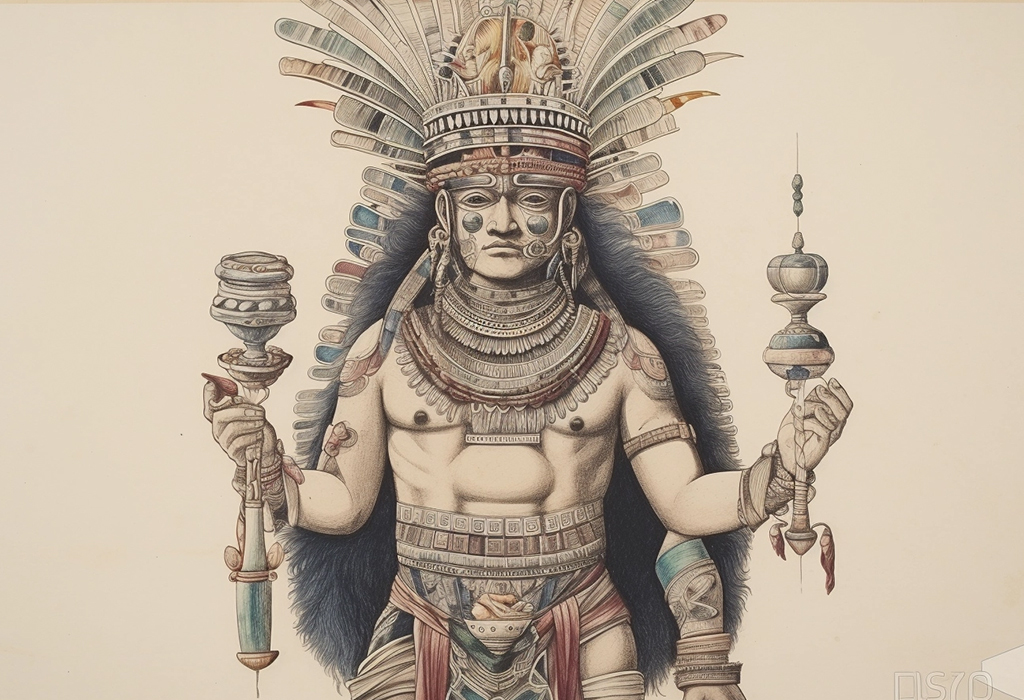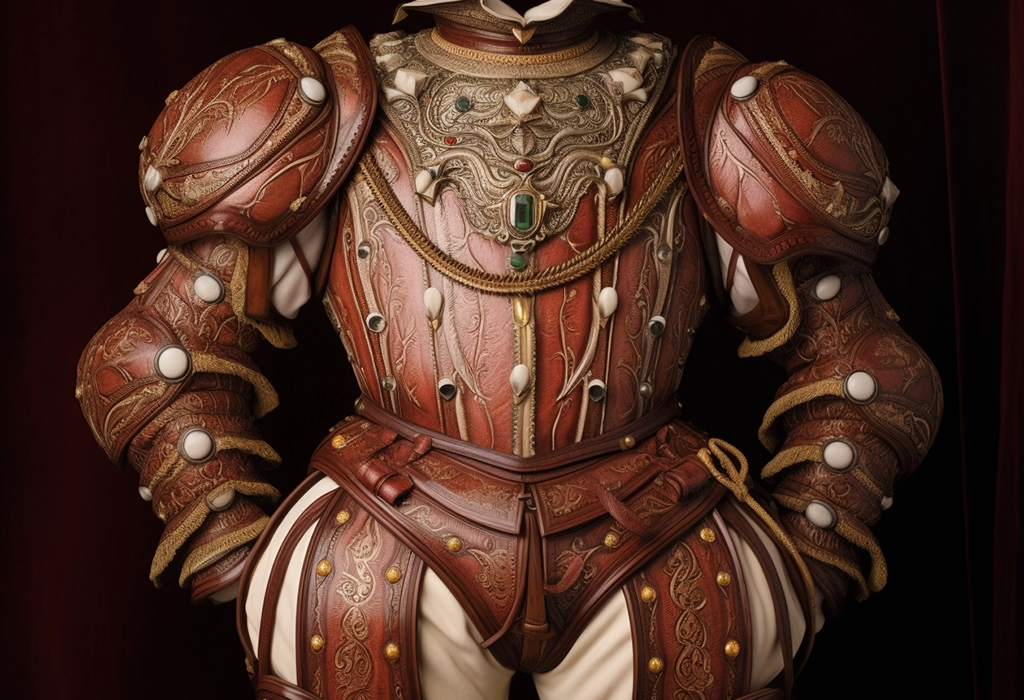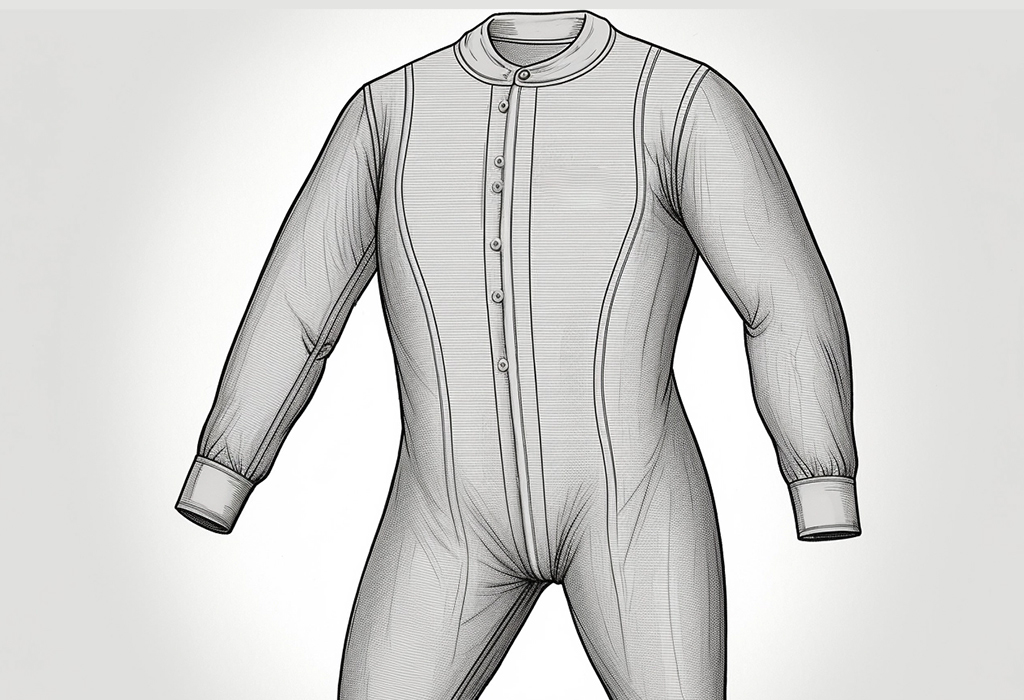[ad_1]
From saving our trousers from perspiration to providing support for the boys down below, underwear is arguably the most integral accouterment to any outfit.
We take them for granted, but were they always so easy to come by? Where did they come from, anyway? How did they develop into the elastic support we know and love?

That’s the topic of today’s article, gentlemen. We’re covering the history of men’s underwear.
1. The Loincloth – Antiquity And Onward
The most rudimentary form of men’s underwear, the loincloth was often a single piece of cloth draped over the groin and hips. They came in all shapes and sizes depending on local cultural influence.
You could honestly write an entire book on loincloths. So many cultures have used it across the centuries, that we couldn’t possibly do it justice in a single article. Nevertheless, we can cover a few notable examples.
The Mediterranean
Ancient Egyptian loincloths, called Schenti, were made with linen and tied toward the front. Since most of the lower classes owned very little clothing, this was deemed acceptable as outerwear.
The seafaring Minoans of Crete likewise had an interesting sense of style. Loincloths show up so frequently in depictions of men, that it was clearly favored as everyday wear. What’s more, imagery shows them in a plethora of patterns and colors.

This is evidence that it was just as fashionable as it was functional.
The Americas
As men’s underwear, loincloths weren’t unique to the Mediterranean. We also see them featured prominently in indigenous American cultures between antiquity and the 14th century.
Incan men, for example, wore their loincloths in such a way that a long strip of cloth extended downward. This functioned as an eye-catching decorative piece.

The Aztecs seemed to wear them interchangeably with other garments. The imagery depicts them alone but also used in conjunction with various cloaks and tunics.
Fun fact: Amazonian native peoples STILL wear loincloths as traditional garments.
2. Going Medieval: 400-1400 AD
As we move into the Middle Ages, we start noticing some intriguing developments in men’s underwear.
First off, we have the knee-length Braies. They were popular at first with Celtic and Germanic peoples in antiquity but saw more widespread use in the Middle Ages. These were loose-fitting linen or woolen trousers that were buttoned or tied closed.

Braies were fitted with a frontal flap called the codpiece which could be unfastened. This allowed men to urinate without having to remove the trousers entirely – a truly revolutionary development!
Though used as trousers in the early Medieval period, they gradually transitioned into men’s underwear.
Henry VIII of England set an odd trend by padding his codpiece, which resulted in men sporting larger and larger packages (crazy, right?).
It’s been speculated that the king actually had Syphilis and that the padding contained medication to alleviate his symptoms.
3. The Industrial Age: 1800-1900 AD
During the age of enlightenment, men’s undergarment designers started prioritizing comfort.
The Union Suit
In 1868 in Utica, NY, the union suit was patented. Though it started as a women’s garment, it took off as menswear. The union suit was a buttoned one-piece garment with long sleeves and pants.

The signature addition was that of a buttoned flap on the buttocks that made trips to the toilet a little easier. It earned a slew of vulgar nicknames such as the “access hatch,” “drop seat,” and “fireman’s flap.”
Eventually, American boxer John L. Sullivan made the garment popular naming them “Long Johns,” which is the name most know them by.
The Jockstrap
In 1874, C.F. Bennett, while working for a Chicago sporting goods company, made his contribution to men’s underwear – the jockstrap.
In the late 19th century, most urban centers were laden with uneven cobblestone surfaces. This made it especially difficult for cyclers in Boston, whose family jewels suffered relentless abuse.
The jockstrap can serve you well in any high-impact sport.
Bennett’s invention offered a solution and, through his new company known as Bike Web, he started distributing it.
The jockstrap consists of an elastic waistband with a supportive pouch for the boys and two straps attached to the base of the pouch on either side. In some variations, the pouch can house an impact-resistant cup for even more protection.
4. The Modern Age: 1900-The Present Day
The turn of the century brought underwear that is much more recognizable.
The Evolution of Briefs & Boxers
The first briefs left the line of Chicago’s Coopers Inc on the 19th of January, 1935. These have an elastic band around the waist and both legs near the groin. Finally, it featured a Y-shaped fly for easy access in a jam.
It was a revolutionary step forward in modern men’s undergarments, receiving the infamous cognomen: “tightey-whiteys.”
Alongside briefs, boxers entered the market in the 1930s. Though it had a band around the waist, it lacked any along the legs. This resulted in a wider and looser leg section that extended to the middle of the thigh.
Other Variations
Between the 20th century and today, several offshoots of the boxer/brief were developed and are now easily purchasable.
The next step in the modern evolution of men’s underwear came with Giorgio Armani in the form of boxer briefs, released in the 1980s. Similar to its predecessor, boxer briefs were slightly longer along the thigh. Some even ceased to have the traditional y-shaped fly.
Another invention of the 80s were trunk briefs. They were similar to Armani’s creation, except that the inseams were a little shorter.
The last 30 years have seen considerable innovation in underwear designs for men.
Some variations include athletic-style boxer briefs, which are skin tight and have no fly. Pouch boxer briefs use – you guessed it – a pouch to house the genitalia rather than a fly.
Midway briefs are the longest of briefs. Born in the 1980s, they’re among the longest modern men’s underwear out there. They stop just above the knee, staying snug with elastic bands.
Think it’s reached the peak? Think again.
Underwear faces as much innovation today as it has throughout history. Nowadays, it’s all about achieving maximum durability and comfort. SHEATH, with its dual pouch feature, is a great example.
In Conclusion – Men’s Underwear
We take underwear for granted. It’s tough to think that guys had to wrap a cloth around their junk every day or pad their crotches.
Gentlemen, I hope you have garnered an appreciation for what modern underwear does for you after this modest history lesson! Don’t take your underwear for granted – there’s history even here!
What to read next? Going commando – why warriors used to fight without underwear?
This article is brought to you by SHEATH – underwear that’s revolutionary by design. Back in 2008, Army Sergeant Robert Patton had the idea for underwear that would eliminate chafing and sticky balls in extreme conditions. SHEATH was the result.
By eliminating skin-to-skin contact, SHEATH’s underwear prevents heat and sweat buildup. This means you’ll never have to worry about rashes and otherwise sticky situations.
[ad_2]
Source link

Hi! I’m a dedicated health blogger sharing valuable insights, natural remedies, and the latest scientific breakthroughs to help readers lead healthier lives. With a holistic approach to wellness, I empower individuals with accessible and actionable content, debunking myths and offering practical tips for incorporating healthy habits.